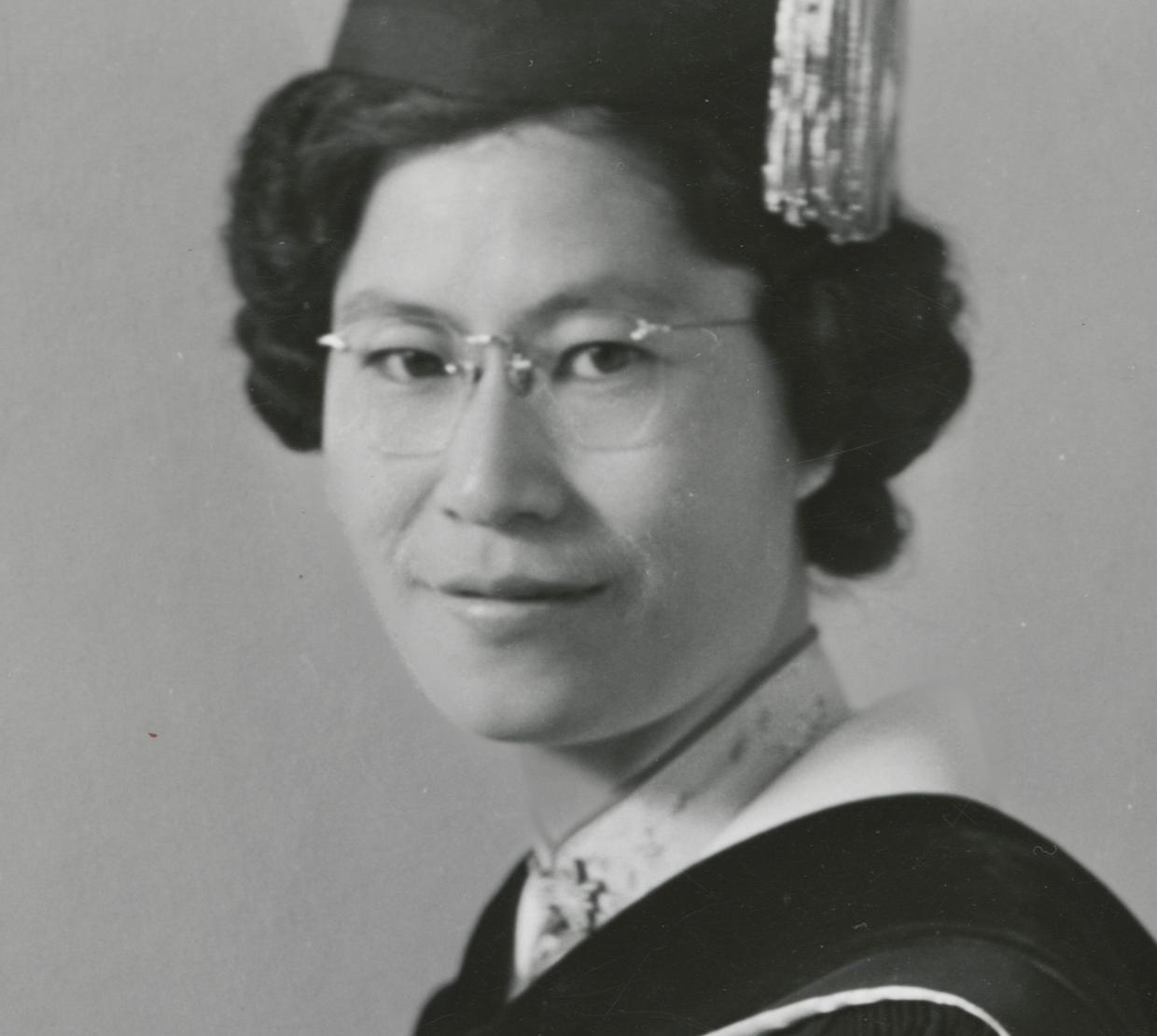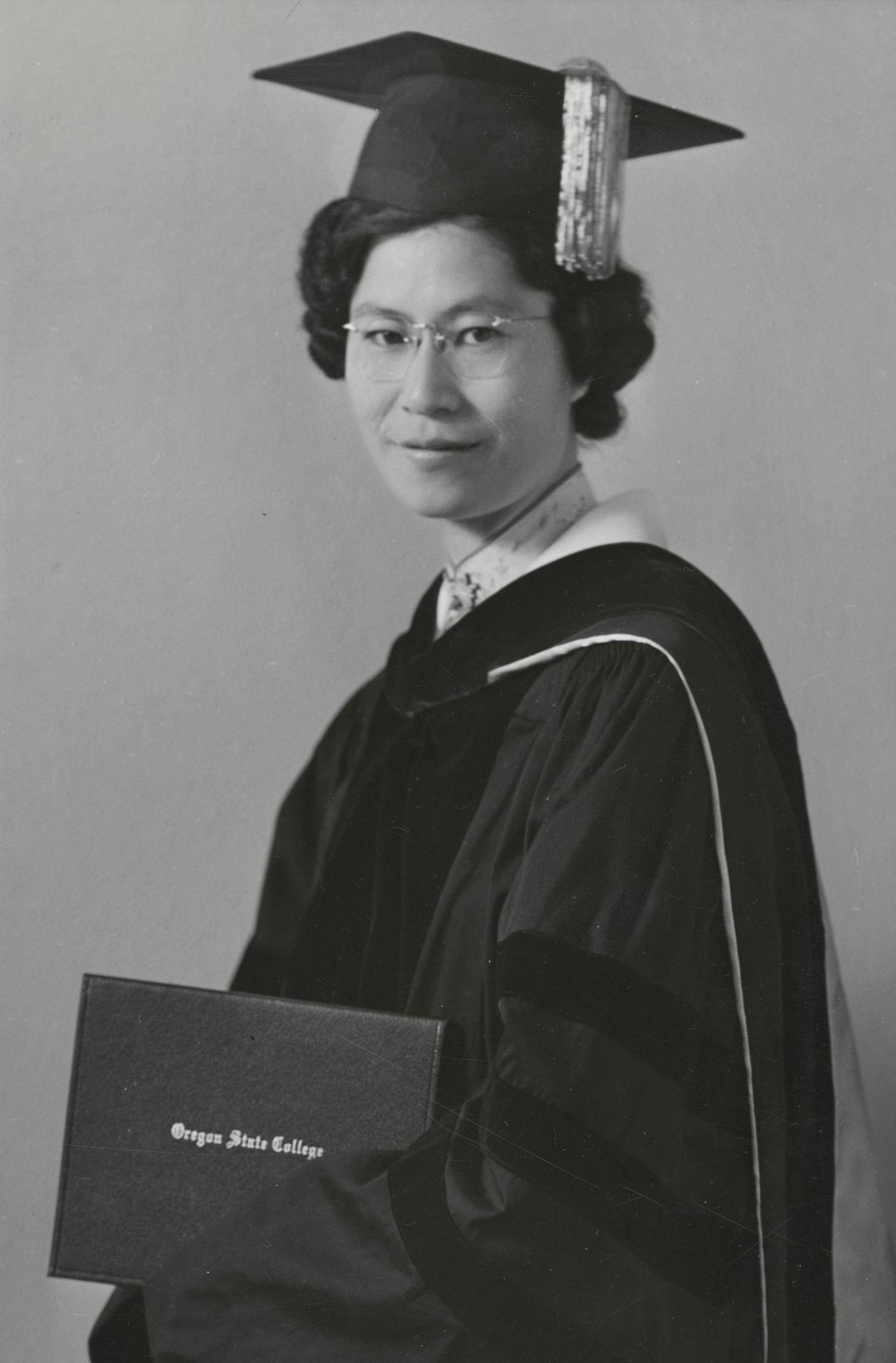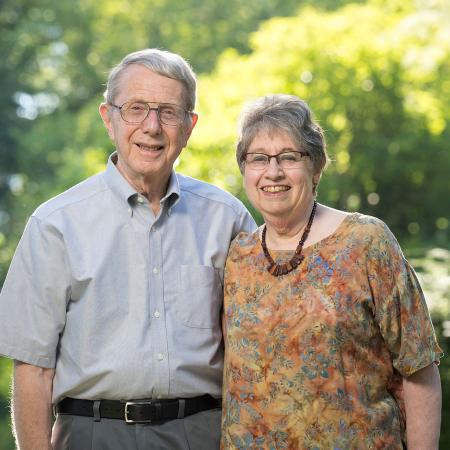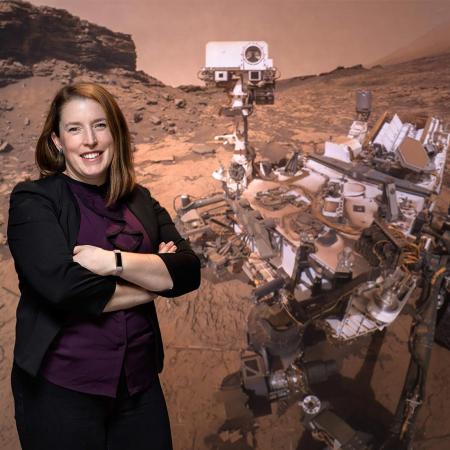In 1936, the Oregon State chapter of Phi Kappa Phi (an academic honor society) offered Miss Lui an exchange scholarship, which covered her tuition and room. She moved into Snell Hall, which was then a women’s dormitory. She was one of the first two students to enroll in the newly formed physics graduate program at Oregon State. Within one year, she had completed and defended her M.S. thesis, Diffusion Phenomena in Strong Magnetic Fields, under the supervision of Professor Willibald Weniger, who was also chair of the Physics Department. Her experimental work studied the magnetic field and temperature dependence of the time for the diffusion of aqueous dye solutions. She continued on to study for a Ph.D. in physics, which she completed in 1941 under the supervision of Professor James Brady. Her thesis, The Crystal Photoeffect in D-Tartaric Acid Single Crystals, concerned a process analogous the better-known photoelectric effect in metals, in which light shining on certain crystals causes a current to flow. She immediately published her Ph.D. thesis work in the Physical Review, the leading U.S. journal of physics research, as a single-authored paper (vol. 60, pages 529-531).
Following the completion of her Ph.D. she taught as an instructor at Oregon State for several years, and then she was hired by the Westinghouse Lamp Research Laboratory in New Jersey, where she studied phosphors and fluorescent lamps. Westinghouse was also investigating materials for possible use as filaments in incandescent lighting, among which was uranium. So during the Manhattan Project, which was the highly secret U.S. effort to develop the atomic bomb during World War II, the Westinghouse expertise in purifying microscopic quantities of uranium was instead applied to kilogram quantities, and Dr. Lui turned her skills to that project.
Although she had originally entered the U.S. on a student visa, which would normally have required her to return to China to apply for admission as a permanent resident (the path to citizenship), the U.S. government did not want her knowledge of the atomic research program to fall into the hands of the Communist Party, which had taken over control of China. So in 1949 the Congress passed, and President Harry Truman immediately signed, a bill “for the relief of Doctor Chung Kwai Lui,” which read in part “the Attorney General is authorized and directed to record Dr. Chung Kwai Lui as having entered the United States in 1936 for permanent residence.” This bill in effect retroactively changed the status under which she had entered the U.S. and thus permitted her to stay. Also in 1949 she married Mr. Hsin Hsu Wei, who had emigrated from China after the war, received a master’s degree in electrical engineering from Columbia University, and also was employed by Westinghouse.
Dr. Chung Kwai Lui Wei remained at Westinghouse, mostly doing research into the properties of phosphors, until she retired in 1974. She published several papers in physics journals on her work with phosphors, and she is the holder of 2 patents, one in the U.S. and the other in Canada. She died in 2008 at the age of 98. She and her husband (who died in 2000) recognized the value that higher education had played in their lives, and they left their estate to establish the Wei Family Private Foundation, which supports scholarships for students of Chinese ancestry who are studying engineering or science at Oregon State or electrical engineering at Columbia. This wonderful legacy will continue to provide support for students at OSU who hope to follow the exemplary path established by the first woman to earn a physics Ph.D. at Oregon State.
This article was originally posted in the Spectrometer.





